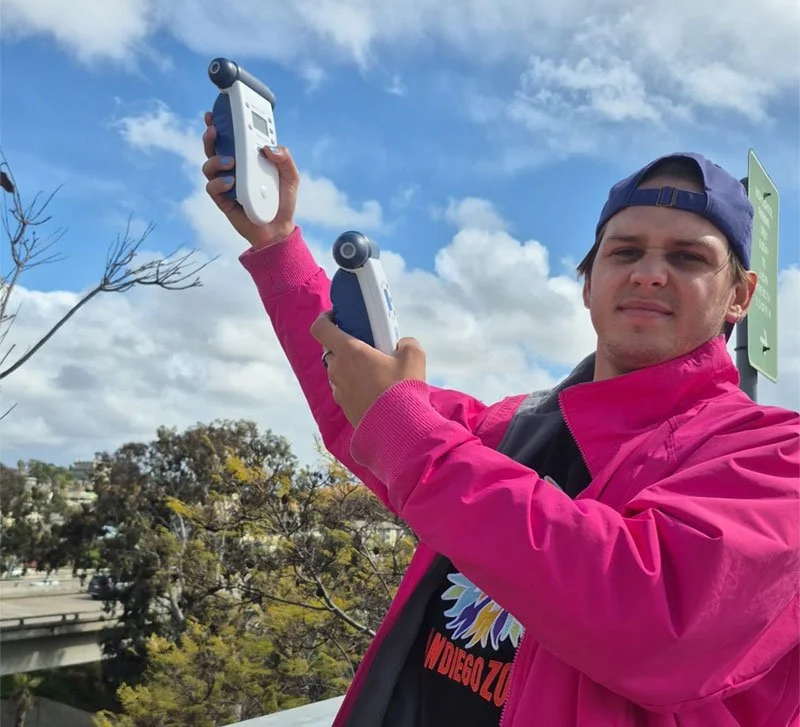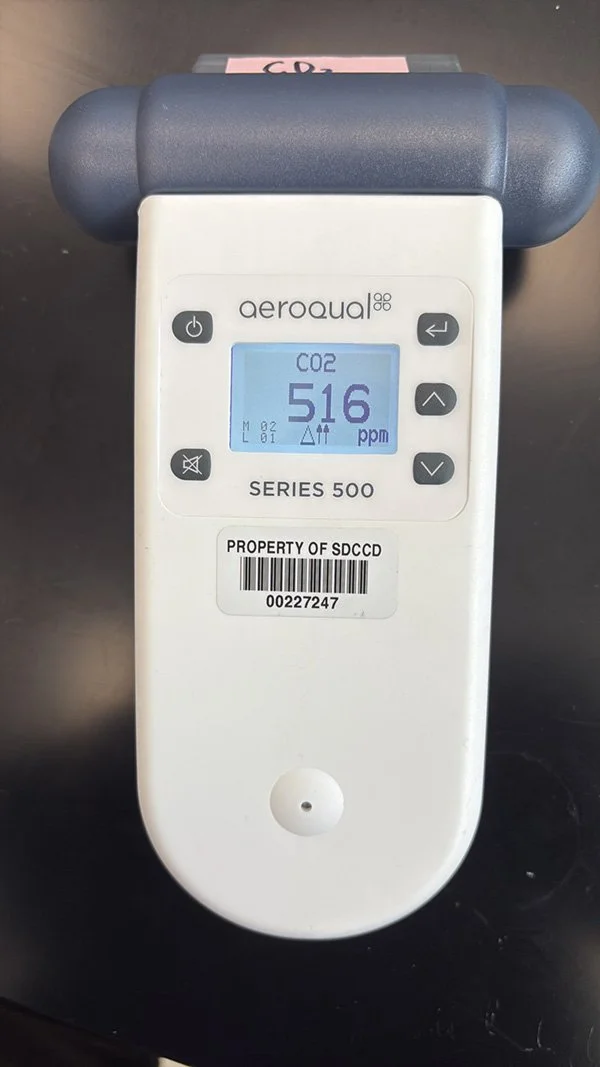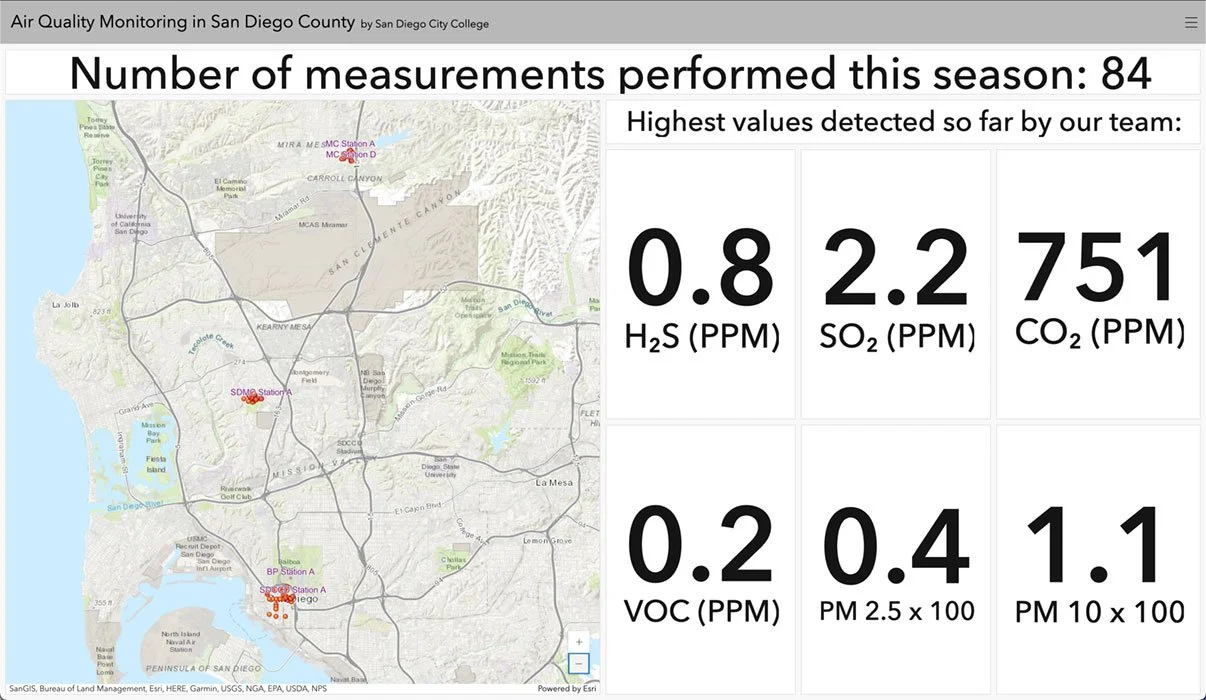Monitoring Air Quality Across San Diego Community College District
Project lab technician Juan Londono Esguerra monitors air on San Diego college campus.
By Guest Author Juan Londono Esguerra
Air pollution affects us all, but how much do we really know about the air we breathe on our college campuses? Thanks to a grant from the California Air Resources Board (CARB), our team is actively studying air pollutants across all three San Diego Community College District (SDCCD) campuses—San Diego City College, San Diego Mesa College, and San Diego Miramar College—as well as off-site areas such as Balboa Park in the heart of San Diego. This initiative represents a crucial step toward understanding and improving environmental health in our academic spaces, with the ultimate goal of implementing greener solutions, such as planting more trees and increasing campus vegetation to help mitigate pollution levels.
Aeroqual Series 500 monitor
One of the critical components of this project is the use of advanced air quality monitoring equipment. We have obtained Aeroqual Series 500 monitors equipped with a variety of sensor heads that allow us to measure multiple pollutants, including volatile organic compounds (VOCs), carbon dioxide (CO₂), hydrogen sulfide (H₂S), sulfur dioxide (SO₂), particulate matter (PM2.5 and PM10), and benzene, toluene, ethylbenzene, and xylene (BTEX). These pollutants can have significant impacts on respiratory health, environmental quality, and overall well-being, making their measurement an essential part of our study.
As a lab technician on this project, my role involves several key tasks to ensure the study runs smoothly and that the data we collect is reliable and actionable. I have been developing quick guides for the Aeroqual Series 500 monitors, ensuring that all team members can efficiently operate the equipment and interpret readings accurately. This allows for consistency in data collection across multiple sites and helps streamline our workflow.
Beyond equipment management, I am also responsible for scouting ideal monitoring locations across SDCCD campuses and Balboa Park. Our team has strategically placed fixed monitor stations in high-traffic areas, near major roads, and in locations where environmental conditions might lead to higher pollution levels. We have already collected various data points and are observing fluctuations in pollutant concentrations at different sites.
Air quality monitoring in San Diego County
In addition to data collection, I am involved in outreach efforts, including collaboration with the Bird Society at City College. This partnership has allowed us to engage students in environmental advocacy and bring awareness to the impact of air pollution on both human and ecological health. By involving students and faculty, we aim to create a community-driven approach to environmental monitoring and action.
We are now in the process of mapping our collected data using a Geographic Information System (GIS). This technology allows us to visualize pollution patterns across our monitoring sites and identify potential hotspots of concern. By analyzing this data, we can assess trends over time and provide valuable insights that could inform future policies and campus improvements. Mapping this information is an essential step in translating raw data into actionable findings that can influence decision-making at both the institutional and community levels.
This project is about much more than just collecting numbers; it’s about awareness, education, and action. By gathering and analyzing air quality data, we hope to provide insights that lead to improved environmental policies and healthier campuses for students, faculty, and staff. The data we collect can be used to advocate for more sustainable campus infrastructure, from increased tree coverage to eco-friendly transportation options.
Looking ahead, we plan to continue expanding our monitoring efforts and refining our GIS-based mapping. As we move forward, we remain committed to our goal of cleaner air and a healthier future for everyone in our academic community.
Stay tuned for updates as we continue this important work!



